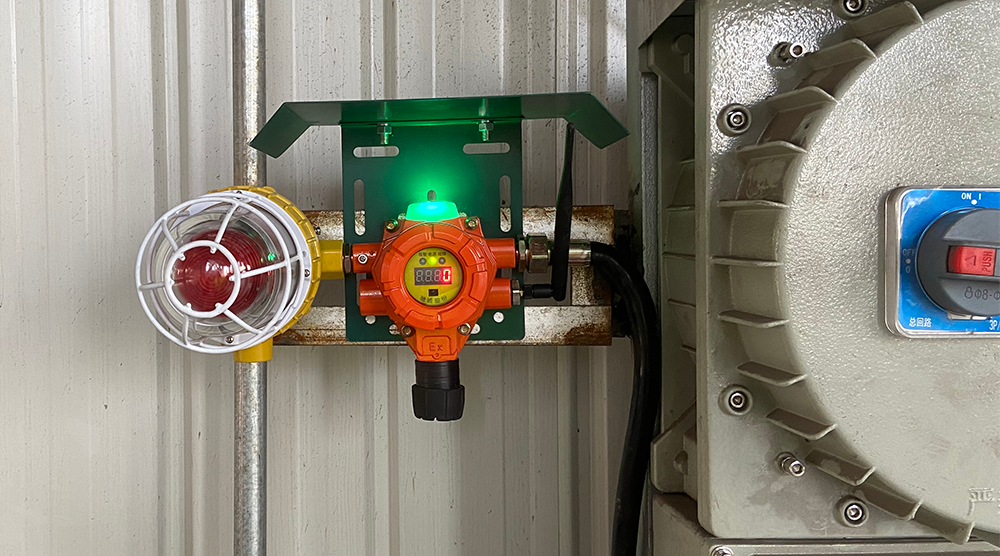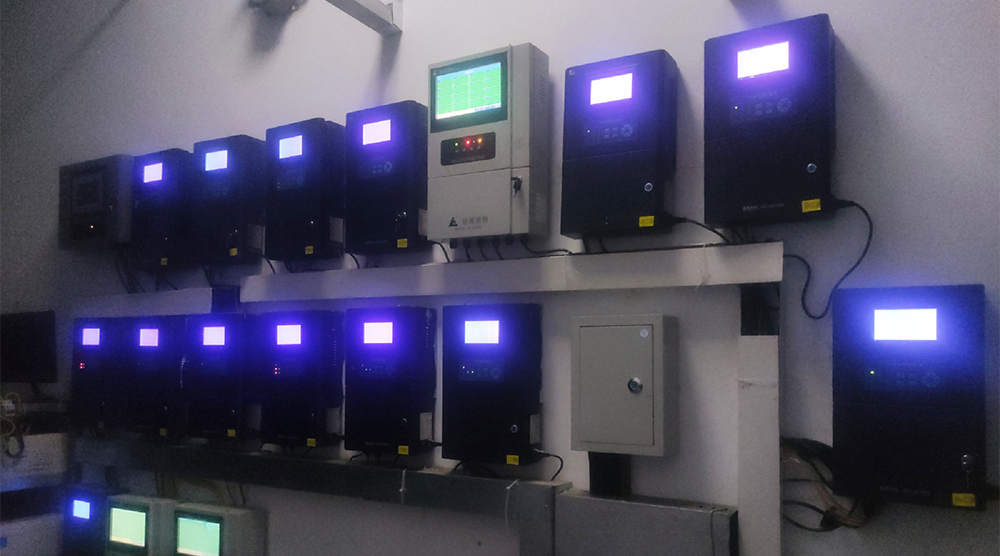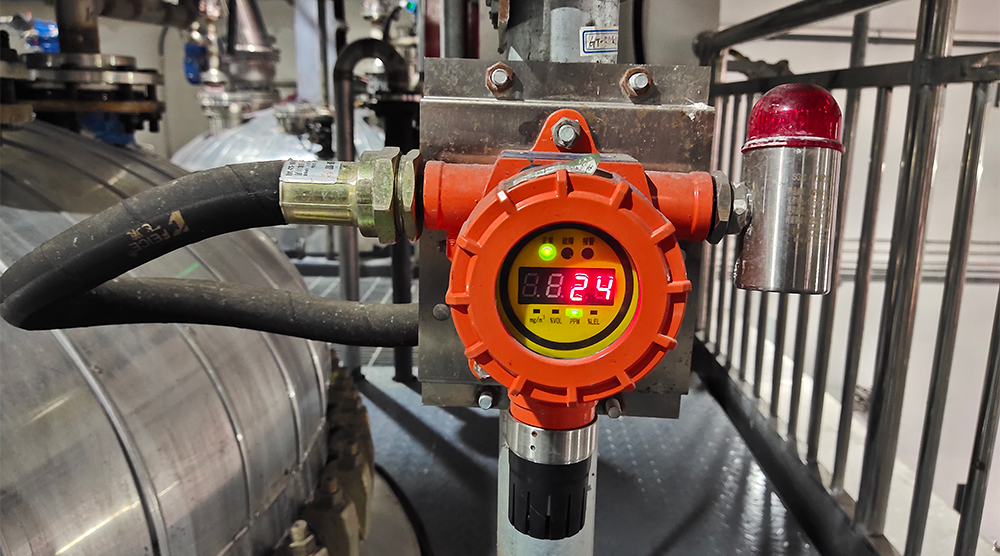The absence of gas detector management can lead to major disasters! Ensuring the sensitivity of the instrument's
Gas detectors can monitor the concentration of combustible gases or toxic and harmful gases in real-time and provide timely warnings, effectively reducing accidents such as explosions, fires, and poisonings. However, in daily work, equipment failure often occurs. Common phenomena include:
1. In places involving leaks of combustible and toxic and harmful gases, detection and alarm devices are not installed according to national standards.
2. The alarm system for combustible and toxic gases leaks is not put into use or is in a non-normal state, and alarms for a long time without being handled.

Related cases:
01
In 2013, a company in Shandong failed to take decisive action when the carbon monoxide detector alarmed at its full scale and a large amount of gas leaked. As a result, an accident occurred, causing 10 deaths and 33 injuries.
02
In 2014, a company in Shandong did not install safety equipment such as toxic gas detectors as required by regulations, and failed to detect the leaking hydrogen sulfide in time, resulting in four deaths and three injuries from hydrogen sulfide poisoning among on-site operators and workshop disposal personnel.
03
In 2018, a company in Hebei had improper management of safety instruments, often muted the alarms for flammable and toxic gases in the control room, and became accustomed to various alarms, unable to respond in a timely manner. As a result, vinyl chloride spread outside the plant and caused an explosion when it encountered a source of ignition, resulting in 24 deaths and 21 injuries.
From the above accidents, it can be seen that the management of flammable and toxic gas detection and alarm systems is lacking, which can easily lead to the further expansion of accidents. In the production process of enterprises, gas alarm devices are an important link. Especially in the early stages of accidents, after the alarm system responds, personnel should take scientific methods to handle the situation as soon as possible to minimize casualties and even prevent accidents from happening.
Therefore, it is crucial for enterprise employees to be proficient in the design standards for combustible and toxic gas detection and alarm, such as Design Standards for Detection and Alarm of Combustible Gas and Toxic Gas in Petrochemical Industry. This ensures that the instruments have a sensitive "sense of smell".

The new requirement
The new GB/T 50493-2019 Design Standards for Detection and Alarm of Combustible Gases and Toxic Gases in Petrochemical Industry puts clearer requirements on the alarm system.
l Gas detector setup is now more clearly defined.
1. For single-component gas media that belong to both combustible and toxic gases, toxic gas detectors should be installed.
2. For multi-component mixed gases that contain both combustible and toxic gases, when a leak occurs and the concentrations of combustible and toxic gases reach the alarm setpoint simultaneously, combustible gas detectors and toxic gas detectors should be installed separately.
l Equipped with remote signal transmission and on-site audio-visual alarm functions.
1. The level two alarm signal for flammable gases, and the fault signals for the alarm control unit of flammable and toxic gas detection systems should be sent to the fire control room.
2. The control room operating area should be equipped with audible and visual alarms for flammable and toxic gases; on-site alarm devices should have audible and visual alarm functions.
l The coverage range of the gas detector has become smaller.
1. For equipment areas arranged in open or partially open factories where release sources are present, the horizontal distance of combustible gas detectors from any release source within their coverage area should not exceed 10 meters, and the horizontal distance of toxic gas detectors from any release source within their coverage area should not exceed 4 meters.
2. For release sources located in enclosed factories or partially open factories with poor local ventilation, the horizontal distance of combustible gas detectors from any release source within their coverage area should not exceed 5 meters, and the horizontal distance of toxic gas detectors from any release source within their coverage area should not exceed 2 meters.
3. For combustible or toxic gas release sources that are lighter than air and present in enclosed or partially open factories with poor local ventilation, in addition to setting up detectors above the release source, combustible or toxic gas detectors should also be placed where gas easily accumulates at the highest point inside the factory.
4. Combustible gas detectors and toxic gas detectors should be installed within the fire protection dike of liquid storage tanks that contain liquefied hydrocarbons, Class B Flammable Liquids, Class A Combustible Liquids, and other liquids that generate combustible gases. The horizontal distance between the combustible gas detector and any release source in its coverage area should not exceed 10 meters, and for toxic gas detectors, the horizontal distance from any release source within its coverage area should not exceed 4 meters.
l The installation height of the gas detector has been further refined.
1. When detecting combustible gases or toxic gases that are heavier than air (with a molecular weight ratio greater than or equal to 1.2), the installation height of the detector should be 0.3m-0.6m from the floor (or floor slab).
2. When detecting combustible gases or toxic gases that are lighter than air (with a molecular weight ratio less than or equal to 0.8), the installation height of the detector should be within 2m above the source of release.
3. When detecting combustible gases or toxic gases that are slightly heavier than air (with a molecular weight ratio between 1.0 and 1.2), the installation height of the detector should be below the source of release at a distance of 0.5m-1m.
4. When detecting combustible gases or toxic gases that are slightly lighter than air (with a molecular weight ratio between 0.8 and 1.0), the installation height of the detector should be 0.5m-1m above the source of release.
5. The installation height of environmental oxygen detectors should be 1.5m-2.0m from the floor or floor slab.
l The alarm threshold of the toxic gas detector has been set more clearly.
The level 1 alarm setting for toxic gases should be less than or equal to 100% OEL, and the level 2 alarm setting should be less than or equal to 200% OEL. For toxic gases with multiple OELs, the priority order for selection should be MAC, PC-TWA, and PC-STEL. For toxic gases without provided OELs, they can be selected based on 10% IDLH. When the measuring range of existing detectors cannot meet the measurement requirements, the level 1 alarm setting for toxic gases should not exceed 5% IDLH, and the level 2 alarm setting should not exceed 10% IDLH.

How to Safely Manage Gas Detectors?
l Identifying risks and properly planning the installation of gas detectors.
Organize professionals in various fields such as process, equipment, instrumentation, and safety, and simultaneously coordinate with the design unit to analyze the types of combustible and toxic gases involved in raw materials, identify possible leakage points, especially for gas compressors and liquid pumps, dynamic seals, liquid and gas sampling ports, liquid (gas) discharge (water) ports and venting ports, frequently disassembled flanges, and frequently operated valve groups around the release sources, in order to prevent the occurrence of situations where detectors are not installed or the wrong type is set up.
l Accurate calculation and reasonable setting of toxic gas detector alarm values.
Alarm signals of different levels should have obvious differences. At least two levels of alarm should be set according to the toxicity of toxic gases.
l Proactively respond and strengthen the management of detector alarm signals.
Establish a detector ledger, verify and confirm with the layout plan, and draw a layout diagram of combustible and toxic gas detectors for the entire plant and each device to facilitate management and prompt handling of alarms. Fire control room personnel should strengthen monitoring and management of level two combustible gas alarm signals and alarm control unit failure signals, and not ignore them. Sound and light alarms should be set up in the control room operation area and area warning devices to prevent alarm sounds from being unheard due to noisy environments. It is strictly prohibited for company personnel to turn off alarms without authorization due to frequent alarms, and the alarm system management should be strengthened by implementing a first-responder responsibility system to promptly handle emergency situations.
l Proactive prevention and scientific handling of gas detector alarms.
Organize training for relevant personnel to standardize the filling out of combustible and toxic gas alarm records. Strictly follow the abnormal handling process. After receiving an alarm from the GDS system, the control room personnel should identify the alarm instrument location and specific position, make alarm records as soon as possible, and notify personnel to confirm the reason for the alarm.
l Regular maintenance and calibration of gas detection alarm devices are necessary.
Regular maintenance should be carried out, and the root causes of alarms should be carefully investigated, such as gas leaks, inappropriate alarm value settings, failure to calibrate on time, sensor damage, equipment circuit problems, etc. The detection and alarm devices should be calibrated according to the Combustible Gas Detection Alarm (JJG 693-2011) regulations, with a cycle generally not exceeding one year, to prevent sensor problems and zero drift. If the instrument experiences severe vibration or shock, or important components are replaced or repaired, it should be calibrated in a timely manner. If the detection and alarm device is found to be out of calibration or malfunctioning, it should be repaired or replaced immediately.

Gas detectors are precision instruments and professional equipment that safeguard the safety of gas environments in various fields. During installation and use, personnel should strictly follow relevant regulations and respond promptly to warning messages, take effective rescue measures, and prevent accidents before they happen!

